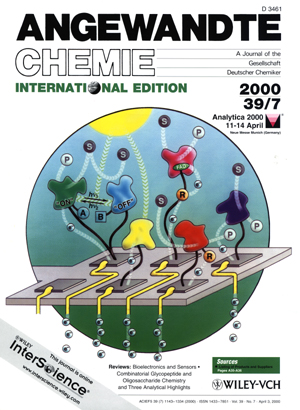 I.
Willner, E.
Katz
I.
Willner, E.
Katz
The cover picture shows schematically the elements of the rapidly developing research fields of bioelectronics and optobioelectronics. Immobilization of redox enzymes as monolayers or thin films on conductive supports yields functionalized biocatalytic electrodes. The formation of electrical contact between the redox center of the enzyme and the electrode surface, which is possible in various ways, provides a means of assembling integrated enzyme electrodes for bioelectronic applications. Photoswitchable redox proteins assembled on electrode surfaces form the basis of optobioelectronic devices. A further element of bioelectronic and optobioelectronic systems is the possibility for the microscale patterning of biomaterials onto the solid supports - through photolithography, micromachining, and stamping. More on the different aspects of bioelectronics and optobioelectronics can be found in the review by I. Willner and E. Katz on page 1180. (Design of the picture by Dr. A.N. Shipway)
